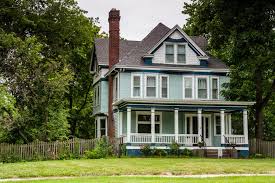Introduction: The Legacy Behind the Doorstep
When you think of Sam Walton, the visionary founder of Walmart, images of sprawling supercenters and billion-dollar deals might come to mind. But behind the global retail empire lies a modest 2,400-square-foot home in Bentonville, Arkansas—a place where Walton’s values of frugality, community, and innovation were nurtured. This article dives deep into the history, significance, and enduring legacy of Sam Walton’s house, offering a rare glimpse into the personal life of a man who revolutionized retail.
Sam Walton was an American retail magnate best known for founding Walmart, which grew to be the world’s largest retailer. He was born on March 29, 1918, in Kingfisher, Oklahoma, and opened the first Walmart store in 1962 in Rogers, Arkansas. Over the years, Walton expanded Walmart into a retail empire with thousands of stores and hundreds of thousands of employees. He also founded Sam’s Club, a chain of wholesale warehouse outlets, in 1983. Walton stepped down as CEO in 1988 but remained active in the company until his death in 1992.
Regarding his net worth, Sam Walton was identified as the richest man in America by Forbes magazine in 1985, with an estimated net worth of $2.8 billion at that time. After his death, his family’s wealth has continued to grow and as of 2025, the Walton family remains among the richest in the United States with a combined net worth reportedly around $440.6 billion.
1. Where Did Sam Walton Live? The Story of 707 NE 8th Street
Nestled in a quiet Bentonville neighborhood, 707 NE 8th Street is more than just an address—it’s a symbol of Sam Walton’s unpretentious lifestyle. Purchased in 1959 for $25,000, this ranch-style house became the Walton family’s homebase as Sam laid the groundwork for Walmart.
Key Details:
- Location: Bentonville, Arkansas (the heart of Walmart’s origins).
- Architecture: A simple 3-bedroom, 2-bathroom home with a screened porch and large backyard.
- Historical Significance: The house witnessed Walmart’s first board meetings, with Sam drafting early business plans at his kitchen table.
Unlike today’s billionaire estates, Walton’s home reflected his belief that “money is just paper” and that true success lies in serving others.
2. A Home That Embodied Walmart’s Founding Principles
Sam Walton’s house wasn’t just a residence—it was a testing ground for the values that built Walmart:
- Frugality: Despite his wealth, Sam famously drove an old pickup truck and refused to renovate his home. The original linoleum floors and 1950s wallpaper stayed intact.
- Community Focus: The Waltons were known for hosting neighborhood barbecues and mentoring local entrepreneurs.
- Work Ethic: Helen Walton, Sam’s wife, once joked, “Our living room was Walmart’s first headquarters.”
The juxtaposition of this humble home against Walmart’s meteoric rise highlights Walton’s rejection of excess—a lesson many modern entrepreneurs still study.
3. Can You Visit Sam Walton’s House Today?
A common question for history buffs and Walmart enthusiasts is whether the home is open to the public.
- Current Status: The house remains privately owned by the Walton family, preserved almost exactly as it was during Sam’s lifetime.
- Public Access: While tours aren’t available, visitors to Bentonville can:
- Explore the Walmart Museum (located in Walton’s original Five and Dime store downtown).
- Visit Crystal Bridges Museum, funded by the Walton Family Foundation.
- Stroll past the residence on 8th Street, where a small plaque commemorates its significance.
Local guides often share anecdotes about Sam’s daily walks to work, his habit of chatting with neighbors, and his love for hunting dogs—a nod to his down-to-earth personality.
4. The House vs. The Empire: A Study in Contrast
In 2025, Walmart’s market cap exceeds $500 billion, yet Sam’s house stands as a time capsule of modesty. This contrast underscores a critical lesson: Scaling a business doesn’t require losing sight of your roots.
Fun Fact:
The Walton family could have built a mansion with their wealth, but Sam insisted, “We don’t need to live in a Taj Mahal. Our thriftiness keeps us grounded.”
5. Bentonville’s Transformation: From Quiet Town to Retail Epicenter
Sam’s house is a cornerstone of Bentonville’s identity. Once a sleepy Ozarks town, Bentonville is now a thriving hub thanks to Walmart’s influence:
- Economic Impact: Walmart’s headquarters employs over 20,000 people.
- Cultural Landmarks:
- The Momentary (modern art space).
- Brightwater Culinary Institute (funded by the Waltons).
- Tourism: Over 1 million annual visitors explore Walmart-related sites.
Yet the Walton family has worked to maintain the town’s charm, ensuring Sam’s legacy of balancing growth with community spirit lives on.
6. Preserving History: Why Sam Walton’s House Matters Today
In an era of corporate excess, Sam’s home serves as a reminder of ethical leadership.
- Educational Value: Business schools analyze Walton’s lifestyle to understand his leadership philosophy.
- Inspiration: Entrepreneurs visit Bentonville to “walk in Sam’s footsteps,” drawing motivation from his humility.
- Cultural Icon: The house has been featured in documentaries like The Story of Walmart and biographies such as Sam Walton: Made in America.
7. FAQs About Sam Walton’s House
Q: Is Sam Walton buried near his home?
A: No. Sam and Helen Walton are buried in Bentonville Cemetery, a mile from the house.
Q: Did Sam Walton really host Walmart meetings at home?
A: Yes! Early meetings with suppliers and managers often occurred in his living room.
Q: Are there any photos of the interior?
A: Limited photos exist, but the Walmart Museum displays replicas of Sam’s home office.
Q: How much is the house worth today?
A: While not publicly listed, similar Bentonville homes sell for $500K–$1M. Its historical value, however, is priceless.
Conclusion: The Enduring Symbolism of 707 NE 8th Street
Sam Walton’s house isn’t just a building—it’s a testament to the power of vision, grit, and humility. In a world obsessed with opulence, this unassuming ranch reminds us that greatness often starts small. As Walmart continues to shape global retail, the home at 707 NE 8th Street stands frozen in time, urging future generations to dream big but stay rooted.
Whether you’re a business leader, history enthusiast, or curious traveler, Sam Walton’s house offers a timeless lesson: True legacy isn’t built in boardrooms—it’s built at home.



